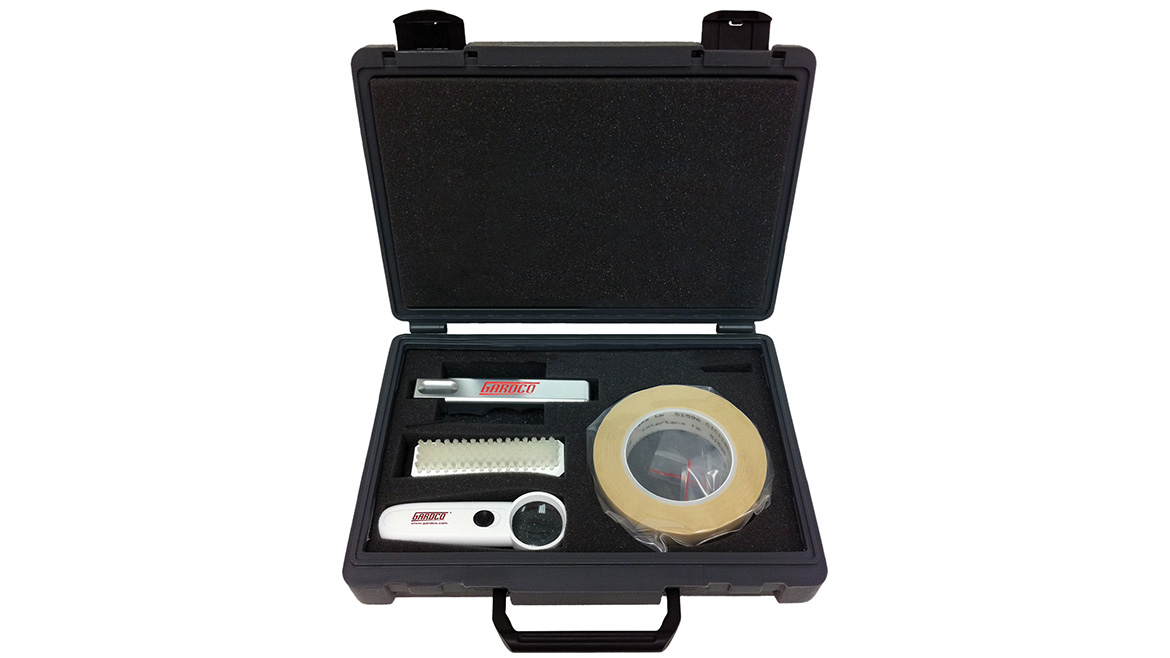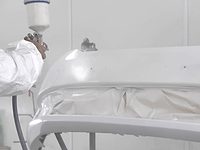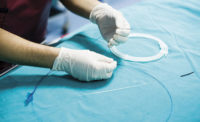Mastering Paint Adhesion
Key Factors for a Lasting Finish

Paint adhesion refers to the ability of a coating to adhere or stick to the substrates on which they are applied. Proper adhesion is crucial for the coating to perform satisfactorily, ensuring the longevity of the coating, and preventing peeling, cracking or flaking. Paint adhesion failure can be attributed to several factors that are essential to understand in order to ensure a successful paint project. These include surface preparation, choice of coating, wetting, curing and environmental conditions.
Surface Preparation
Surface preparation refers to the readiness of the substrate to receive the coating. The surface that you intend to paint must be thoroughly cleaned, dry and free of any contaminants that may affect adhesion. Any dirt, grease or loose paint should be removed to ensure proper adhesion. The surface may also need to be sanded to create a rough texture that the paint can adhere to. Below is a basic guide for proper surface preparation:
Remove Any Old Paint or Coating Remaining on the Substrate
If a coating is applied over pre-existing peeling, flaking or bubbling, it can fail as well, continuing underneath the new coating layer.
Be Sure that the Surface is Clean
Clean or remove all acids, chlorides, oils, grease, lubricants or other industrial maintenance products. These products are commonly used to keep industrial equipment and materials running at peak performance but can compromise the bond between the coating and substrate if not removed prior to repainting.
Remove All Loose Contaminants
Remove parts of the surface that can break loose or crumble, such as rust or compromised masonry. Abrasive blasting is the most efficient process for proper removal, and is the preferred method of surface preparation for most coatings manufacturers.
Test the Surface Profile
Most coatings show increased adhesion properties on surfaces where abrasive blasting, followed by surface profile testing has been performed. Without reprofiling the substrate to meet the specification, the coating’s bond may not be sufficient. Contaminates are often invisible to the naked eye, making surface profile testing necessary to determine their presence on a surface. Once completely clean of contaminants, a full mechanical bond can be established.
Ensure the Prepared Surface is Dry
Paint and coatings will not adhere to wet surfaces. Flash corrosion or pinholes can develop if any moisture gets trapped between the surface and the coating, which can also continue under a newly applied coating.

Type of Substrate
The type of substrate that you intend to paint can also affect adhesion. Some substrates, such as metal or plastic, may require a specific type of paint to ensure proper adhesion. It is essential to select a coating that is compatible with the substrate. The profile of the substrate that the coating will be applied to also affects the coating adhesion. Rougher surfaces are less difficult to establish coating adhesion because there is more area for the coating to interlock with the substrate.
Choice of Coating
The choice of coating can significantly affect its adhesion to the substrate. Different coatings have varying levels of adhesion, and it is crucial to select a coating that is appropriate for the surface that you intend to paint. The coating must also be applied correctly to ensure proper adhesion. Several factors can impact adhesion.
Chemical Compatibility
The coating material should be chemically compatible with the substrate; incompatible materials can lead to poor adhesion.
Coating Type
Different coatings have varying adhesion properties. Epoxy coatings tend to have excellent adhesion to a variety of substrates. Silicone coatings have lower adhesion to many materials. The specific type of coating you choose should align with the substrate and the intended application.
Addition of Primer/Adhesion Promoters
Primers or adhesion promoters are applied before the coating to enhance the bond between the coating and the substrate, particularly when dealing with challenging combinations.
Coating Cure Times and Conditions
Coatings often require specific cure times and conditions such as temperature and humidity for optimal adhesion.
Coating Thickness
Overly thick coatings may be more prone to cracking and delamination, reducing adhesion. To prevent this, the coating thickness can easily be tested during application with a wet film thickness gauge and adjusted as needed to the required thickness.
Improper Surface Wetting
Wetting is the reduction of surface tension of the coating so that it properly wets the substrate upon application. The most common method used to decrease the surface tension of the coating is to include a wetting agent in the liquid paint. If the coating is not adequately wetted on the surface, the surface bond and adhesion can be negatively affected. This results in premature coating degradation as well as substrate degradation.
Insufficient Curing or Crosslinking
Several aspects of curing can lead to poor adhesion of the coating to the substrate. These include uncured coatings, over-curing of coatings and insufficient crosslinking, which is a process that binds polymer chains together, resulting in a stronger coating. There are three types of crosslinking:
Self-Crosslinking
1K systems self-crosslink without the addition of additives (ready to go). 2K systems require the addition of an additive close to the point of application for crosslinking (commonly used for wood flooring).
Polymer Reaction with Substrate
In this case, the polymer crosslinks with itself as well as crosslinks with the substrate, creating a strong covalent chemical bond between the substrate and polymer. (Used for wash resistance of textiles, strong mechanical properties, high tensile resistance, or chemical resistance.)
Pre and Post Crosslinking
Polymers can be partially crosslinked when made or can be crosslinked post-application to a substrate. The latter being the preferred method.
The choice of crosslinking method should be based on the conditions, substrate, performance requirements, regulatory restraints, safety, cost, cosolvents and film formation.
Environmental Conditions
Environmental conditions can also affect paint adhesion. Extreme temperatures or high humidity can affect the drying and curing of the paint, which can impact adhesion. It is essential to paint under appropriate environmental conditions to ensure proper adhesion. Environmental issues that affect adhesion include:
- Prolonged exposure to external factors such as water, humidity and UV light.
- Condensation on the substrate.
- Contamination of the steel substrate by water-soluble salts.
- Thermal gradients (temperature differences) across the coated surfaces
Other Factors
- Applying two different, incompatible coating products.
- Exceeding the over coating time.
- Water-soluble solvents trapped within the applied coating film.
Paint Adhesion Testing
Adhesion testing equipment is used to measure the force required to separate two surfaces. There are a variety of adhesion testers on the market, such as cross-cut testers, pull-off adhesion testers, scrape adhesion testers and tape tests, but all operate by applying a known force to a sample and measuring the displacement. Some testers also measure the time it takes for the adhesive to fail.


Proper paint adhesion is essential for ensuring the longevity, durability, protection and appearance of a coating. Consideration of factors such as surface preparation, choice of coating, wetting, curing and environmental conditions during application is essential to ensure proper adhesion. Testing paint adhesion is crucial in identifying potential adhesion issues before they become a problem. By understanding the concept of paint adhesion, we can ensure that our paint projects remain looking good and provide adequate protection for a long time.
For more information, visit the www.gardco.com website.
Looking for a reprint of this article?
From high-res PDFs to custom plaques, order your copy today!






